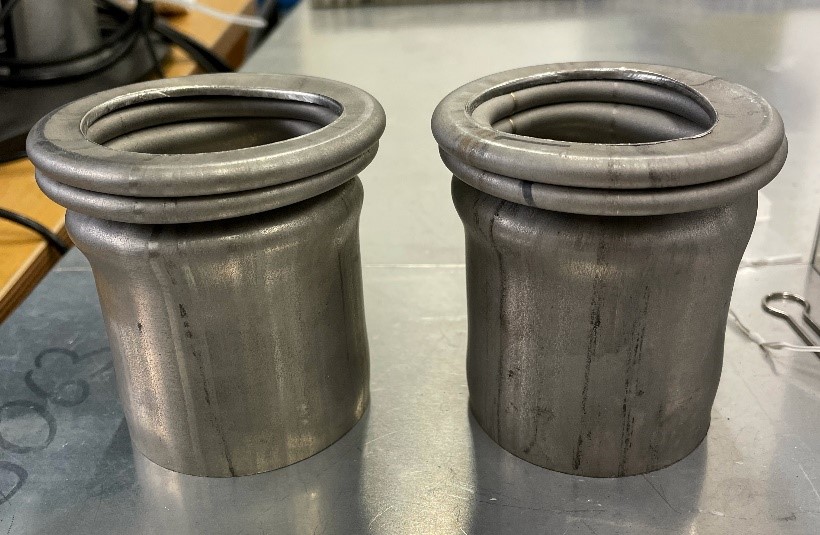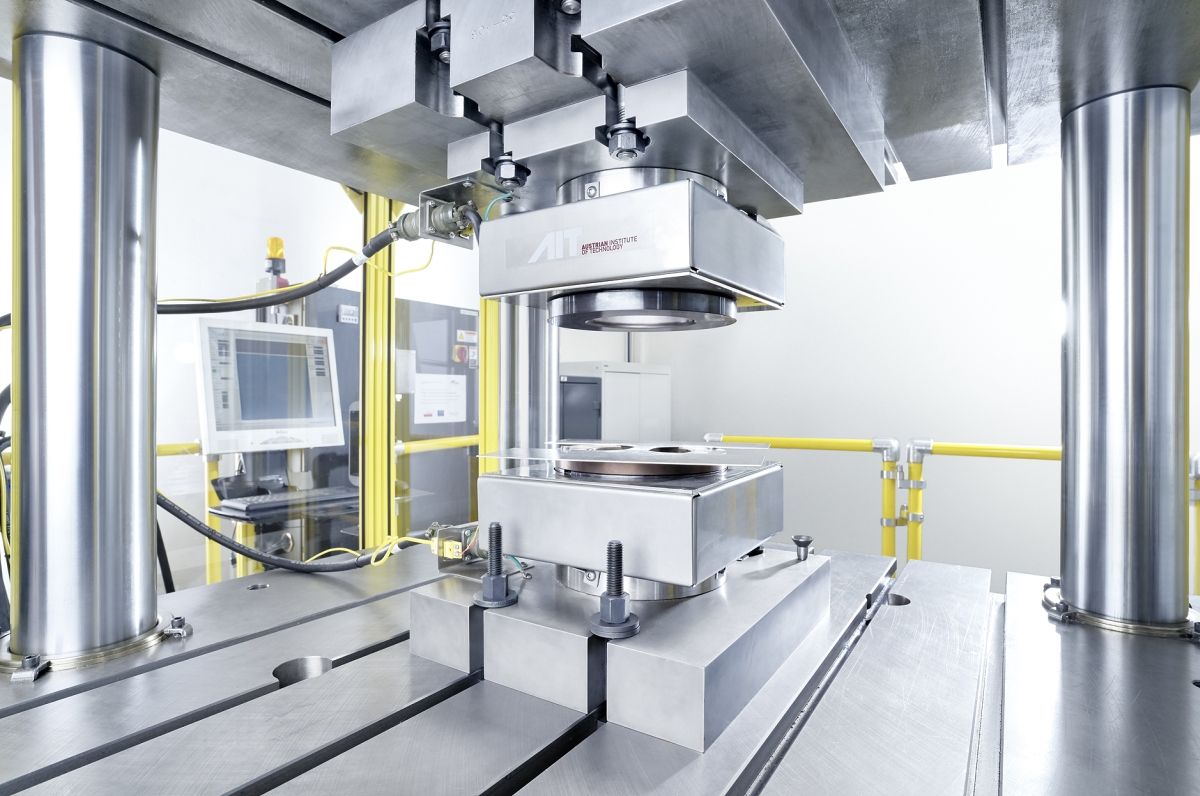Electrically Assisted Forming (EAF) by using the Electroplastic Effect (EPE)
In view of the climate crisis, Green Deal and decarbonization are now central to sustainable technological development. More and more OEMs are setting deadlines to convert their entire product chains to CO2-neutral production or to purchase only components produced accordingly. In addition to the complete switch to renewable energy sources, an imperative of the hour is to develop and establish optimized production processes with maximum efficient energy use in order to accelerate the exit from the fossil fuel era.
In metal processing, traditionally a very energy-intensive industry, there is great potential for energy savings; this is particularly true for forming technology, as around two thirds of the metallic materials produced are further processed by forming. For this reason, the LKR has included the technological and scientific research of the "Electroplastic Effect" (EPE) in its strategic goals and - together with renowned industrial partners - to bring it to industrial implementation. The EPE shows that the plastic flow of various metals (Al, Fe, Mg, Ti,...) is facilitated when high pulsed electric currents flow through the forming zone during forming.
By using EPE, it is possible, among other things, to increase efficiency in the actual forming processes, avoid the application of high thermal energy, reduce the necessary deformation forces, minimize process waste and reduce process steps. This opens up a wide range of potential savings. Further noteworthy advantages are the reduction of flow stress, the increase of ductility and the reduction of springback during material production [2]. In the English-language scientific literature, the use of EPE is mainly associated with the terms "Electrically Assisted Forming" (EAF) and "Electrically Assisted Manufacturing" (EAM).
For example, it has been confirmed in literature that strong and brittle Ti-6Al-4V is significantly easier to compress [1]. In initial experiments, the EPE at LKR was demonstrated on stainless steels by reducing the force required for compression. (Fig.1).
Fig. 1: Pipe sections compressed with the aid of the EPE
Although EPE has been investigated for about 50 years, the underlying mechanisms are not yet fully understood. Initially, the component temperature increased by the current flow (Joule heating) was the basis for explaining the reduced yield stress. However, more recent research results show that other effects must play a role in addition to the thermal effect [3]. Proposed mechanisms include electron wind, localized Joule heating at grain boundaries and dislocations, and enhanced atomic diffusion (electromigration). Widely used here is the theory of electron wind. Here electrons, generated by the applied electrical energy, scatter from dislocations, causing impulse transmission and thus assisting dislocation movement. The second and third mechanisms are based on enhanced diffusion of atoms and vacancies to localized thermal hotspots [4, 5]. Although these theories propose different mechanisms for EPE, they all support the view that the application of electrical energy affects dislocations in metals.
Although it has not yet been possible to distinguish between the athermal effects or the mechanisms have not yet been fully clarified, the decoupling of the Joule effect in uniaxial tensile tests has already been successful [6, 7]. These investigations confirm that the reduction in yield stress and increase in ductility can be attributed to the pulsed current and not only to Joule heating. Furthermore, it was recently demonstrated on a titanium alloy that the athermal part of the EPE can be separated from the mere heating of the component [5].
Fig. 2: Forming press adapted for studies of the Electroplastic Effect (EPE)
In order to be able to carry out experiments in the EAF in a semi-industrial context, the press shown in Fig. 2 was adapted at the LKR for forming processes with high pulsed current densities. In addition, tensile tests are carried out on various materials. Their results are basis for forming simulations, which in turn are considered in conjunction with simulations of the current distribution in the formed components. In parallel, the influence on microstructure development, texture and precipitations of phases during deformation under current flow is being researched as well as the influence of insulating/contacting coatings.
The advantages of electrically assisted forming (EAF) summarized:
- Higher plastic strain
- Reduction of necessary deformation forces
- Forming process at lower temperatures
- Reduced springback
- Increased ductility
- Minimization of process waste
- Reduction of process steps (and thus less hall space, land use)
The LKR is already working with renowned partners in this area. However, we see a very large and diverse potential in different fields of the manufacturing industry. We would be pleased if you approach us with your specific development topic and we can make a contribution to your efforts towards CO2-neutral manufacturing!







